Early in this millennium, recently retired, I was searching for reasons to show why Charles and Mary Rannells’ farmhouse/mansion, Woodside, should not be torn down. It is the oldest building in our town, Maplewood, Missouri. While searching for Mary’s name I happened upon an article that ran in the St. Louis Post-Dispatch on July 31, 1882 that described the events that occurred at a meeting of the Missouri Bicycle Club on their first anniversary. It noted that Mary and one of her sons had invited members of the Missouri Bicycle Club “to spend Wednesday evening at their residence at Bartold’s Grove.” (Woodside).
This caught my attention because I love bicycles. I have ridden a bike most of my life. Having been raised in a very hilly area, I have long understood that the reward for struggling up one side of a hill lies just on the other side. A recent discovery has allowed me to see just how very important the hilly terrain of my youth was to the first bicyclists in this area.
I grew up on a road that runs east and west along the tops of four ridges. It is not surprising that the name of it is Four Ridge Road. In many places the land drops off sharply on both sides of the road. Riding a bicycle on top of the ridges doesn’t present a problem but if you have to turn on any road to either the north or south and head down into a valley, it is downright dangerous. I don’t know what angle these slopes are but they are steep. Very steep.
Several miles past my boyhood home, Four Ridge Road ends at Old Lemay Ferry at a spot called Frisco Hill. Myself and my friends were all familiar with this spot and its name because of a granite marker that had been placed there by the St. Louis Cycling Club in 1919. I knew nothing of the bicycling history represented by that marker until very recently.
Turning left (north) from Four Ridge onto Old Lemay Ferry is a miles long descent winding up at Seckman Road before the terrain heads up again. Nothing much was around in those days. Lake Holiday, with a swimming pool and picnic grounds, was near there. It has been completely erased by development, I’ve been told. I have not been over that road in many decades.
Turning right (south) from Four Ridge onto Old Lemay Ferry took one in the direction of the nearest town, Antonia. Immediately the traveler whether by bicycle, foot or car is faced with a very steep, long descent. At the bottom of which lies the one hill between you and the town but what a hill it is. In the era of one speed, balloon tire bikes it was impossible to climb. Your only choice was to walk your bike up the hill which took a very long time. Needless to say we rarely ever rode our bikes to Antonia. Coming back was even harder for there were two hills that had to be climbed.
The earliest bicyclists in the St. Louis area knew of these hills and revered them for the challenge they presented. They spoke reverently of Frisco Hill and also of Rogers Hill which lay south of Antonia. I believe that Rogers Hill was known to us in the 1950s as Snake Hill which it is still called today.
The popularity of bicycles soared in the1880s with the invention of the ordinary. The ordinary, also known as a high wheeler, had a very large wheel in front and a small one in the rear. They were difficult to mount by using a small step on the rear of the frame. Some riders relied on friends to help them climb aboard. The riders also were at risk of “headers.” When the front wheel encountered an obstruction in a certain way, the frame design allowed the rider to pitch head first over the handlebars.
This was the type of machine with which these intrepid souls negotiated the hills of the De Soto Run as some called it. Considering that these roads weren’t paved either makes this run unimaginable to us today. There are many accounts of these rides in the vintage newspapers. I’ll excerpt from many of them and hopefully give the reader an idea of what was going on.
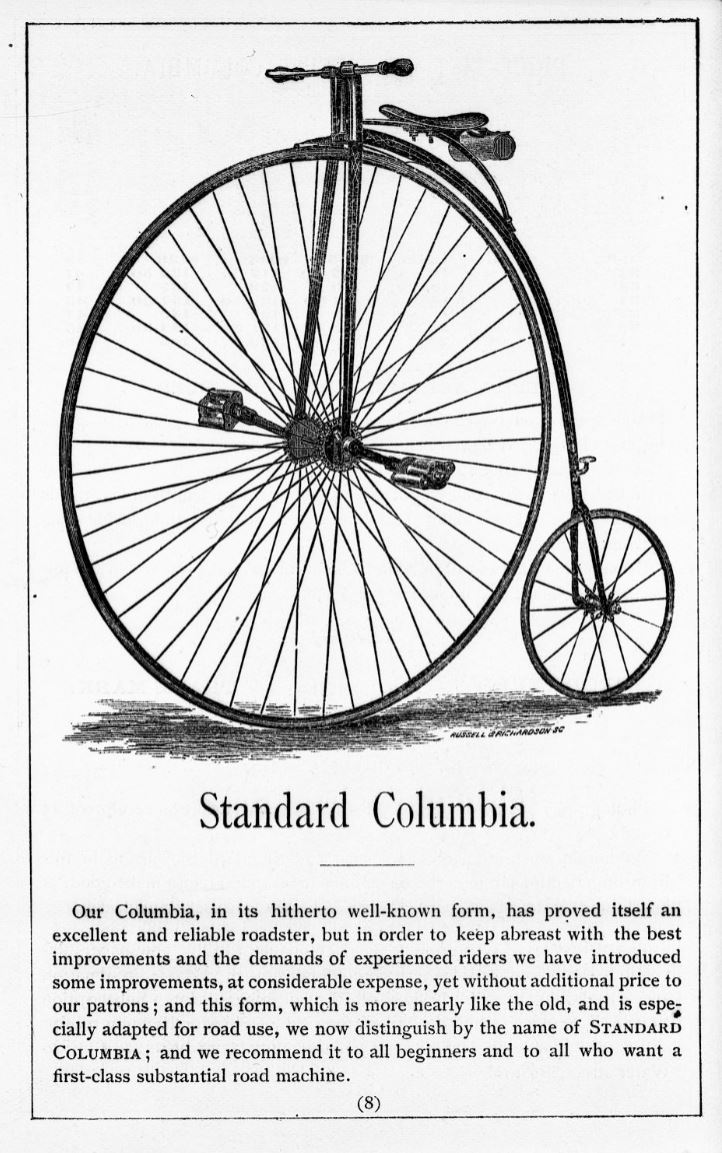
I was searching for information about the Rannells family when I found a short article about the first anniversary of the Missouri Bicycle Club. It included the following records. Bear in mind these records were made with bicycles such as the one above.



The following excerpts are all from an article published in the St. Louis Post-Dispatch on August 22, 1885. It is clearly shows that the activity known as bicycle riding was very much in its infancy. The first excerpt begins with instructions for the cyclist on how not to frighten horses when passing them. Then it mentions the Chief of Police who wanted to prohibit bicycles from using the streets in his town, St. Joseph. The next paragraph states that in Chicago there are about 100 bicycle and tricycle owners. 100! In all of Chicago! Amazing.
A little further down it is noted that just a year earlier a pastor was very much scandalized by seeing a bicycle in front of his church after a service. Why, I wonder?
The last paragraph provides details of a ride to Bulltown as Antonia was known in those days. A man named Cola Stone is referred to a couple of times. He was an area champion.
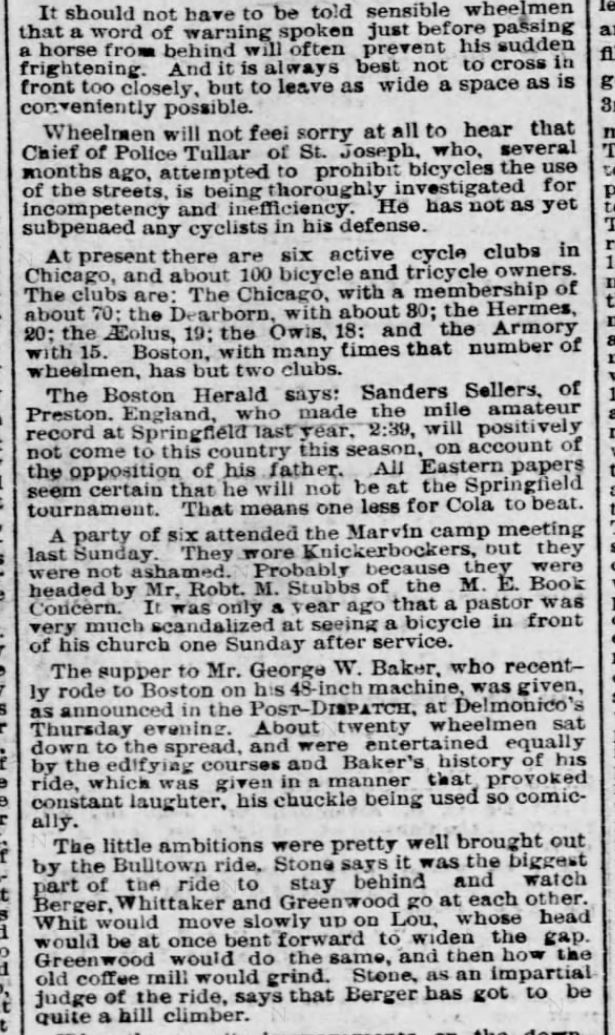

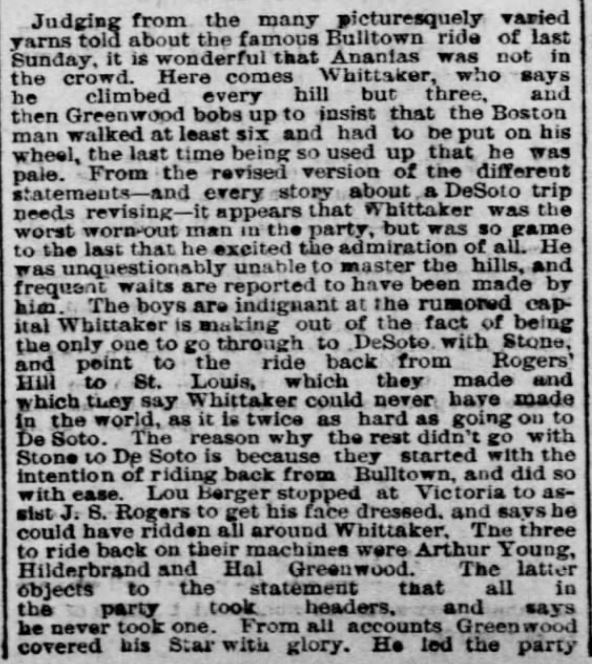
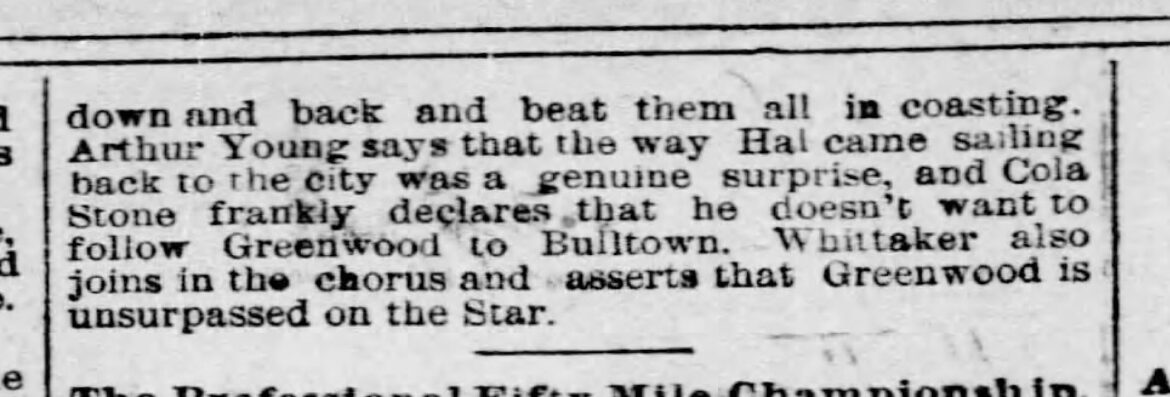
The De Soto Run (as it was often called) was a tortuous bicycle ride. The roads were unpaved. There were no bridges between Bulltown (Antonia) and De Soto. The small mountains near Bulltown were so tough that riders from other states and countries came to test their capabilities. These last few excerpts show that Hal Greenwood was the man to beat. Even Cola Stone, a champion, says in the last paragraph that he “doesn’t want to follow Greenwood to Bulltown.” “…Greenwood is unsurpassed on the Star.” The Star is his bicycle which must be part of the reason he had done so well, I thought. What did it look like?
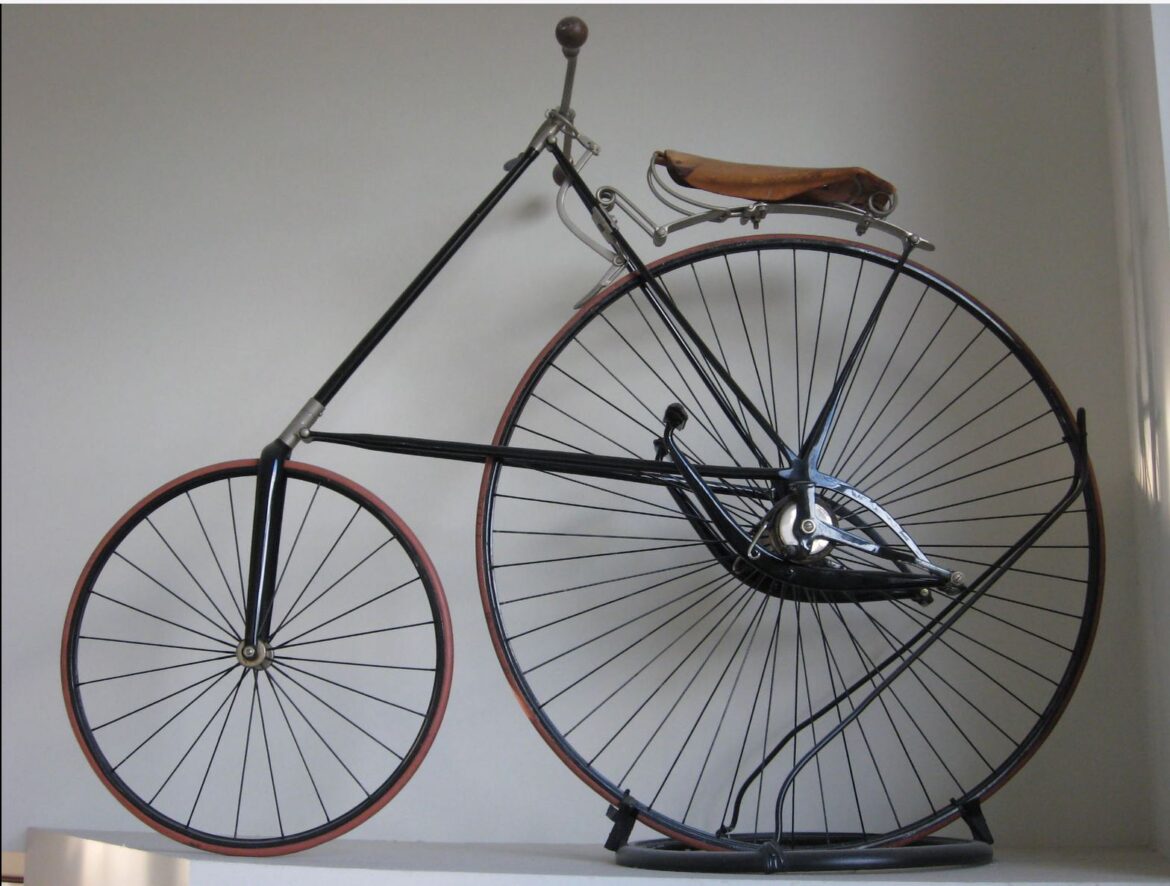
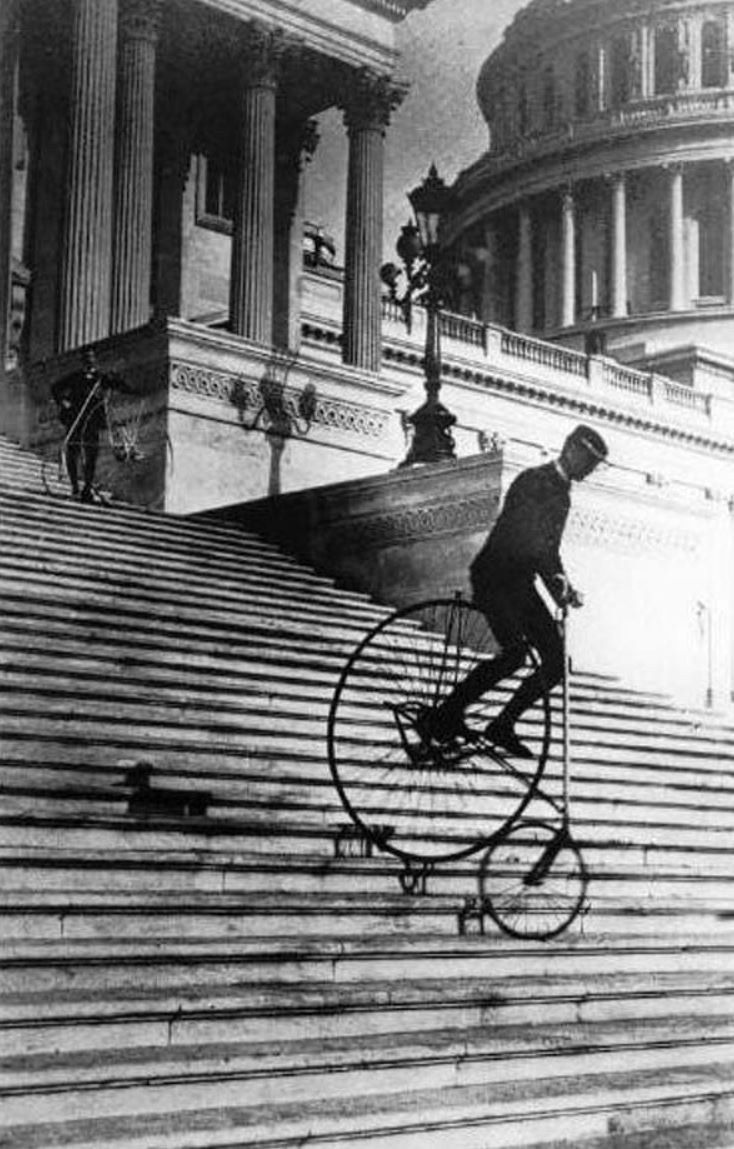
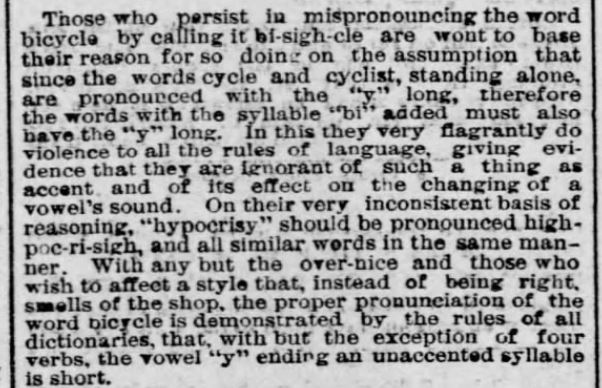
This is quite a lot for an interested reader to digest. Never mind the disinterested ones, they never got this far. Believe it or not, I have a lot more information on this subject but it will have to be presented in my next post.
Our weather has been remarkable. My wife and I enjoy it immensely. We had lunch outside at Ryan Hummert Park with several friends today. The forecast for the next week or so doesn’t look too bad. Keep your fingers crossed.
The virus is raging. Please be safe and stay healthy.
Doug Houser December 10, 2020
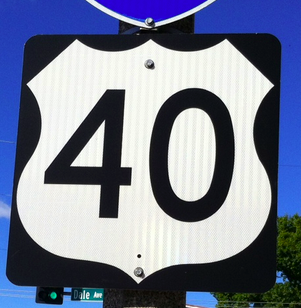
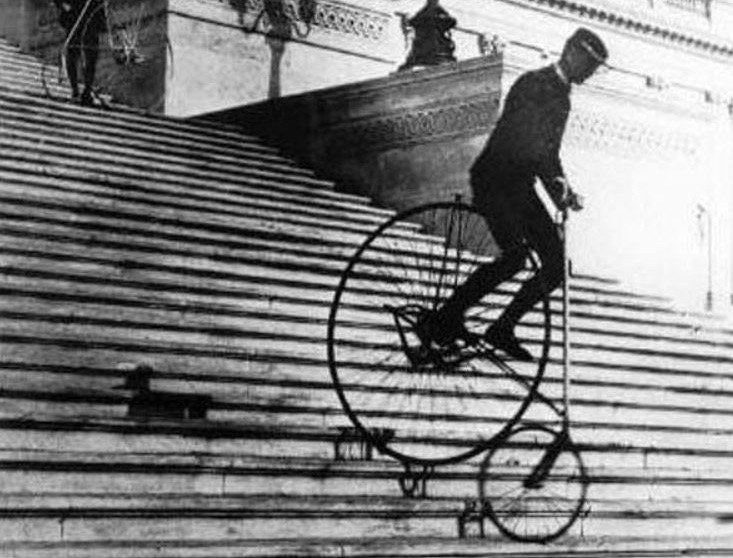
I have driven in a car what I think is that route and remember my car downshifting on some of those hills. Much like Wild Horse Creek road, which I have traveled much more frequently, I have often wondered how a bicyclist could ride up and down some of those hills. I certainly could not do it with today’s multi geared bikes, cannot imagine doing it on a single speed bike and on either gravel or chat or dirt.
I know what you are saying, Mark. After reading these old articles, I have a desire to go drive those roads again but I’m afraid they will have been updated and modernized like everything else. In my youth they were paved but now they have most likely been widened and as Waylon Jennings said the curves have been straightened and the hills flattened. Nothin’ stays the same.
Comments are closed.